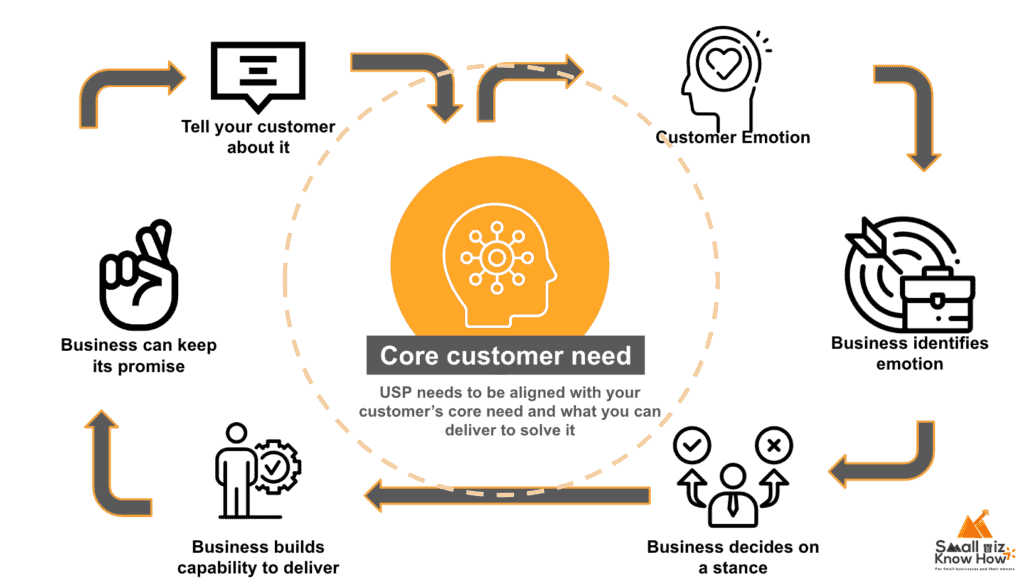The concept of lead nurturing stands as a a key pillar in any strategy to improve lead generation and for cultivating potential customers and enhancing their journey towards making a purchase.
But what exactly does lead nurturing entail? Essentially, it’s a focused process designed to build effective relationships with potential buyers at every stage of the sales funnel.
Unlike direct sales tactics, lead nurturing is subtler and more persistent, aiming to grow the seeds of initial interest into flourishing customer engagements. Through targeted content and personalized interactions, businesses can significantly increase the likelihood of turning leads into loyal customers.
This article goes into the mechanisms of lead nurturing, exploring its fundamental principles and practical applications across various digital platforms.
Introduction to Lead Nurturing: Understanding the Basics

Lead nurturing encompasses both on-campaign and off-campaign elements, integral for developing sustained relationships.
Objective Setting is foundational, where specific goals such as lead conversion rates or customer retention are determined.
Content Planning supports this, delivering relevant material across multiple channels to engage leads at different decision-making stages.
Campaign Components are crucial; this includes structured emails, personalized outreach, and automated follow-ups tailored to guide leads closer to a sale.
Off-campaign, Soft Skills Development like empathetic communication and responsiveness play a vital role in maintaining connection beyond initial interactions.
Analysis and Adjustment occur after campaign runs, where data is scrutinized to refine strategies. Adjustments based on this data ensure that both on-campaign tactics and off-campaign strategies evolve to more effectively nurture leads, optimizing the entire cycle for better engagement and conversion.
This holistic approach to lead nurturing ensures a seamless integration of all activities, propelling leads towards becoming loyal customers.
What does lead nurturing mean? From a customer lens
From a customer experience standpoint, lead nurturing is fundamentally about guiding potential customers through a psychological and emotional journey, aimed at deepening their relationship with a brand.
This journey is thoughtfully designed to align with the evolving needs and interests of the customer at each stage of their decision-making process.
Initially, the journey begins with awareness, where the nurturing process introduces the customer to the brand in a meaningful way.
This is often achieved through educational content that resonates with the customer’s initial needs or questions. As the relationship progresses, the nurturing efforts evolve into more personalized interactions, often through tailored communications that address the customer’s specific pain points or desires.
The ultimate goal of lead nurturing is to make the customer feel understood and valued, not just from a transactional perspective but as a long-term relationship.
This journey not only builds trust but also positions the brand as a preferred choice, making the customer more likely to convert and stay loyal.
Basically, lead nurturing is about creating an ongoing dialogue that adapts to the customer’s journey, enhancing their experience and satisfaction with the brand at every touchpoint.
The Lead Nurturing Process: How It Unfolds in Successful Campaigns

A well-executed lead nurturing campaign operates like a well-oiled machine, with every component synchronized to move potential customers smoothly towards conversion.
Here’s an overview of how such campaigns typically unfold, demonstrating the coordination of various activities:
- Identification and Segmentation: The campaign starts by identifying potential leads and segmenting them based on their behavior, interests, and demographic details to tailor the messaging accurately.
- Content Creation and Delivery: Relevant and engaging content is created, which might include emails, blog posts, white papers, and webinars that address the specific needs and pain points of each segment.
- Multi-channel Engagement: Leads are nurtured through multiple channels such as email, social media, and personalized web experiences, ensuring consistent and coherent messaging across all platforms.
- Lead Scoring and Prioritization: As interactions occur, leads are scored based on their activities and engagement levels. This helps in prioritizing efforts towards those most likely to convert.
- Feedback and Adaptation: Feedback mechanisms are integrated to capture responses from the leads, which are used to refine and adjust the campaign strategies.
- Automation and Integration: Automation tools are used to ensure timely delivery and to scale the nurturing efforts efficiently, while integration with CRM systems helps in tracking and managing leads effectively.
- Evaluation and Optimization: Finally, the campaign’s effectiveness is evaluated using metrics like conversion rates and ROI. Insights gathered are used to optimize ongoing and future campaigns.
To visualize how these activities are coordinated, consider this table layout:
| Stage | Activity | Tools/Platforms Used |
|---|---|---|
| Identification | Lead capture and segmentation | CRM, Analytics Software |
| Content Delivery | Email campaigns, social posts | Email Automation, CMS |
| Engagement | Personalized interactions | Social Media, Website |
| Lead Management | Scoring and prioritization | Lead Scoring Tools, CRM |
| Feedback | Surveys, response analysis | Survey Tools, CRM |
| Automation | Campaign execution | Marketing Automation Tools |
| Evaluation | Performance analysis | Analytics Platforms, CRM |
This table showcases the synchronization of activities, ensuring a cohesive and comprehensive nurturing effort.
What is an example of nurturing?
Let’s consider an example lead nurturing campaign for a hypothetical company, Acme Software, which sells a project management tool.
This will illustrate how each component in the nurturing process contributes to a cohesive campaign:
- Identification and Segmentation: Acme Software captures leads from a webinar signup form and segments them based on their company size and industry, gathered through the registration process.
- Content Creation and Delivery: For each segment, Acme creates tailored email series. Small businesses in the IT sector receive content about optimizing project delivery with limited resources, while larger enterprises get insights on using the tool for complex, multi-departmental projects.
- Multi-channel Engagement: In addition to email, Acme engages these leads through targeted LinkedIn posts and retargeting ads that highlight key features of the software relevant to each segment.
- Lead Scoring and Prioritization: Leads that open emails multiple times or engage with content are scored higher and receive more direct contact, such as an invitation to a personal demo.
- Feedback and Adaptation: Acme uses feedback from email surveys and interaction data to refine the content and timing of future messages.
- Automation and Integration: The campaign is automated through a marketing platform that integrates with their CRM, allowing real-time lead tracking and messaging adjustments based on engagement.
- Evaluation and Optimization: After three months, Acme reviews the campaign’s conversion rates and overall engagement metrics, leading to adjustments in content and targeting to improve ROI.
This example showcases how Acme Software systematically moves leads through the nurturing process, using tailored content and strategic engagement to guide potential customers towards a purchase.
Strategies for Effective Lead Nurturing
Effective lead nurturing strategies are essential for moving potential customers through the sales funnel. The choice of strategy often depends on the business model, the nature of the product or service, and the characteristics of the target audience.
Here’s a breakdown of some top strategies and insights into when to use them:
| Strategy | Description | Ideal Usage Scenario |
|---|---|---|
| Personalized Email Campaigns | Tailoring emails to address specific needs of the lead. | When you have detailed lead data to segment audiences. |
| Multi-Channel Nurturing | Engaging leads across various platforms. | When leads are active on multiple digital platforms. |
| Lead Scoring | Prioritizing leads based on engagement and potential. | When dealing with a large volume of leads. |
| Educational Content | Providing valuable information to help leads make decisions. | When leads are in the early stages of the buying process. |
| Trigger-Based Messaging | Sending automated messages based on lead actions. | When immediate follow-up can capitalize on lead interest. |
| Sales and Marketing Alignment | Ensuring consistent messaging and objectives across departments. | When both teams need to be involved in the nurturing process. |
| Regular Follow-Ups and Feedback | Keeping in touch with leads and adapting based on their feedback. | When long sales cycles are involved. |
These strategies provide a framework to approach lead nurturing effectively, enabling businesses to adapt to varying circumstances and maximize the potential of their lead nurturing efforts.
How do you effectively nurture leads?

To effectively nurture leads, integrating a suite of strategic approaches can create a seamless and impactful nurturing process. Here’s how you can stitch together various strategies:
- Start with Personalized Email Campaigns: Segment your leads and tailor emails that address their specific needs and interests, providing a strong foundation for personal connection.
- Expand with Multi-Channel Nurturing: Engage with your leads where they are most active, such as social media, forums, or direct mails, ensuring consistent presence across different platforms.
- Implement Lead Scoring: Evaluate and score leads based on their engagement and potential to prioritize and tailor your efforts to the most promising prospects.
- Educate Through Content: Provide educational content that assists leads at different stages of their buying journey, helping them make informed decisions.
- Utilize Trigger-Based Messaging: Set up automated responses triggered by specific lead actions, like visiting a particular page or downloading a resource, to capitalize on their immediate interest.
- Align Sales and Marketing: Ensure that both your sales and marketing teams are synchronized in their strategies and communications to provide a unified customer experience.
- Follow Up Regularly: Maintain contact with leads through regular follow-ups. Use their feedback to adapt your approach, making them feel valued and understood.
By carefully combining these strategies, businesses can craft a comprehensive lead nurturing program that not only converts leads into customers but also builds lasting relationships.
Lead Nurturing in Digital Marketing: Integrating Modern Technologies
In digital marketing, the integration of modern technologies has revolutionized lead nurturing by enabling marketers to personalize and scale their efforts more effectively.
These technologies facilitate the creation of detailed lead profiles and predictive analytics, allowing marketers to anticipate lead needs and tailor interactions accordingly.
Key capabilities include real-time data processing, automated behavioral-triggered communications, and AI-driven content personalization.
The prerequisites for utilizing these technologies effectively include a robust data infrastructure, integration capabilities across marketing tools, and a strategy that aligns with business objectives.
The impact of these technologies is substantial, improving metrics such as engagement rates, conversion rates, and overall ROI by providing a more targeted and responsive nurturing process.
Here’s a table outlining the capabilities, prerequisites, and impacts of these modern technologies:
| Capability | Prerequisites | Impact on Metrics |
|---|---|---|
| Real-Time Data Processing | High-quality data sources | Enhances responsiveness and lead engagement |
| Automated Communications | Marketing automation tools | Increases conversion rates, reduces time lag |
| AI-Driven Personalization | AI capabilities, data analytics | Boosts content relevancy, improves user experience |
| Predictive Analytics | Advanced data analytics skills | Anticipates lead behavior, optimizes strategies |
| Cross-Platform Integration | Compatible systems and software | Ensures cohesive messaging, enhances tracking |
This table can serve as a quick guide for marketers looking to enhance their lead nurturing efforts through modern technologies.
What is lead nurturing in email marketing?

In email marketing, lead nurturing focuses on developing relationships with leads at every stage of the sales funnel through strategic, personalized email communications.
Key concepts include:
- Segmentation: Dividing your email list based on demographics, behaviors, or lead status to send more targeted and relevant emails.
- Personalization: Using lead data to tailor emails, addressing leads by name, or referencing their specific interests or past behaviors.
- Content Relevance: Sending content that is useful and timely to the leads, whether educational, informational, or promotional, depending on their stage in the buyer’s journey.
- Behavioral Triggers: Automating email sends based on specific actions taken by leads, such as downloading a white paper or visiting a product page, which indicates their interest level and intent.
- Consistency and Timing: Maintaining a regular cadence of communication without overwhelming the leads, choosing optimal times for sending emails based on data.
Critical areas to focus on include ensuring the integration of your CRM with your email marketing platform for better data management, continually testing and optimizing your email campaigns for better performance, and always keeping the content aligned with the broader marketing goals and lead expectations.
You should also check out my article on getting the best out of cold emails to generate leads.
Tools and Technologies: Enhancing Your Lead Nurturing Framework
When selecting lead nurturing tools and technologies, businesses have a diverse range of options to choose from, each offering unique capabilities tailored to different marketing needs.
Below is a detailed table that lists top lead nurturing tools, ranked on factors such as review scores on G2, ease of setup, costs, and top reviews from users:
| Tool | Ease of Setup | Cost | Top User Review Insights |
|---|---|---|---|
| HubSpot CRM | Moderate | Starts free, premium plans | Highly integrated, user-friendly, extensive automation features |
| Keap | Moderate | Starts at $169/month | Great for sales and marketing automation, but costly and complex for some |
| Zoominfo | Complex | Starts at $15,000/year | Powerful for data intelligence and automated outreach, but expensive |
| Marketo | Complex | Starts at $895/month | Excellent for multi-channel marketing and automation, but has a steep learning curve |
| Mailchimp | Easy | Free to $350/month | Versatile with extensive integration options, but limited support on free plan |
| Zoho CRM | Easy | $14 to $52/user/month | Good for process management and automation, though advanced features are pricier |
| ActiveCampaign | Moderate | $19 to $149/user/month | Strong in automation and CRM integration, but higher tiers are costly |
| Nutshell | Easy | $16/user/month | User-friendly with strong pipeline management, though some features require add-ons |
| Pipedrive | Easy | $14.90 to $99/user/month | Excellent for sales pipeline management, intuitive and customizable |
| Unbounce | Moderate | Starts at $80/month | Great for landing page optimization and A/B testing, with easy setup |
| Brevo | Easy | Free to some degree, then custom pricing | Effective for multi-channel engagement, user-friendly but may lack some advanced features |
| Skylead | Moderate | Custom pricing | Best for LinkedIn automation, though limited beyond LinkedIn |
These tools provide a variety of functionalities from email marketing, CRM integrations, AI-powered insights, multi-channel marketing, and more. The choice of tool largely depends on your specific lead nurturing needs, budget constraints, and the technical expertise of your team.
For more detailed reviews and feature breakdowns, you can visit platforms like G2 and Capterra where many of these tools are extensively reviewed by users.
Real-World Applications: Lead Nurturing Examples and Case Studies
In a compelling example of lead nurturing, a technology firm executed a comprehensive content marketing campaign aimed at generating qualified leads for their new software product.
The campaign’s foundation was built on creating high-quality, engaging content that not only attracted leads but also educated them, moving them further along the sales funnel.
Lead Nurturing Campaign Objectives
The primary goal was to generate 500 qualified leads within the first month of the product launch. The company aimed to establish thought leadership and enhance brand visibility while effectively converting content engagement into tangible leads.
Strategic Execution
The campaign utilized a multi-pronged approach:
- Content Creation: The company developed a variety of content types, including blog posts, whitepapers, and tutorial videos, each tailored to address specific stages of the buyer’s journey.
- Social Media Engagement: Leveraging platforms like LinkedIn and Twitter, the content was distributed to maximize reach and engagement. Regular interactions and timely posts helped maintain the audience’s interest and directed traffic to the company’s website.
- Email Marketing: A series of personalized emails were sent to prospects who had shown interest in the content. This helped in maintaining a connection with the leads and gently nudged them down the funnel.
- SEO Optimization: By optimizing content for search engines, the company ensured that their material was easily discoverable by potential leads searching for related topics.
Measurable Outcomes
The results were remarkable:
- The campaign successfully generated 750 qualified leads, surpassing the initial goal by 50%.
- There was a significant increase in website traffic, with a notable improvement in the time spent on pages that hosted the targeted content.
- The conversion rates from lead to customer saw a substantial boost, reflecting the high quality of the leads generated.
Lessons Learned and Best Practices
Key takeaways from this campaign included:
- The importance of aligning content with the specific needs and interests of the target audience.
- The effectiveness of a multi-channel dissemination strategy that encompasses social media, email, and SEO.
- Regular tracking and analytics are crucial to understand the effectiveness of different types of content and strategies, allowing for real-time adjustments and optimization.
This case study underscores the power of content marketing as a lead nurturing tool when combined with strategic planning and execution
Measuring Success in Lead Nurturing

To gauge the effectiveness of lead nurturing efforts, businesses rely on specific metrics that provide insights into the performance of their campaigns.
Understanding these metrics is crucial for optimizing strategies and ensuring the maximum return on investment.
Conversion Rate: This is the percentage of leads that complete a desired action, such as filling out a form, signing up for a webinar, or making a purchase.
It is calculated by dividing the number of conversions by the total number of leads, then multiplying by 100.
A high conversion rate indicates that the nurturing efforts are resonating well with the leads.
Conversion Rate (%)=(Number of ConversionsTotal Number of Leads)×100Conversion Rate (%)=(Total Number of LeadsNumber of Conversions)×100
Click-Through Rate (CTR): This measures the effectiveness of your emails or ads by showing the percentage of leads who clicked on a link within them.
It is calculated by dividing the number of clicks by the number of impressions or emails sent, then multiplying by 100.
A higher CTR suggests that the content is engaging and prompts action from leads.
Click-Through Rate (%)=(Number of ClicksTotal Impressions)×100Click-Through Rate (%)=(Total ImpressionsNumber of Clicks)×100
Lead to Customer Conversion Rate: This metric reflects how well nurtured leads convert into paying customers.
It is a critical measure of the direct impact of nurturing on revenue and is calculated by dividing the number of new customers acquired through the campaign by the total number of nurtured leads, then multiplying by 100.
Lead to Customer Conversion Rate (%)=(Number of New CustomersTotal Number of Nurtured Leads)×100Lead to Customer Conversion Rate (%)=(Total Number of Nurtured LeadsNumber of New Customers)×100
Time to Conversion: This tracks the average time it takes for a lead to move from initial capture to conversion. Reducing this time is often a key objective of effective lead nurturing, indicating a more efficient sales cycle.
Return on Investment (ROI): Ultimately, the success of a lead nurturing campaign is measured by its ROI. This metric compares the profit generated from the campaign to its cost.
It is calculated by subtracting the cost of the campaign from the profit generated, dividing by the cost, and then multiplying by 100 to get a percentage.
ROI (%)=(Profit−Cost of CampaignCost of Campaign)×100ROI (%)=(Cost of CampaignProfit−Cost of Campaign)×100
These metrics provide a clear picture of how well your lead nurturing efforts are performing. By regularly tracking and analyzing these figures, marketers can make informed decisions to refine their strategies, enhance lead engagement, and ultimately boost conversion rates.
This continuous improvement cycle is key to achieving long-term success in lead nurturing campaigns.
